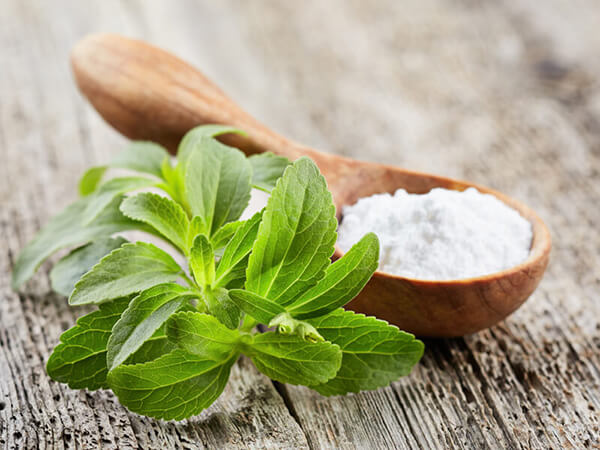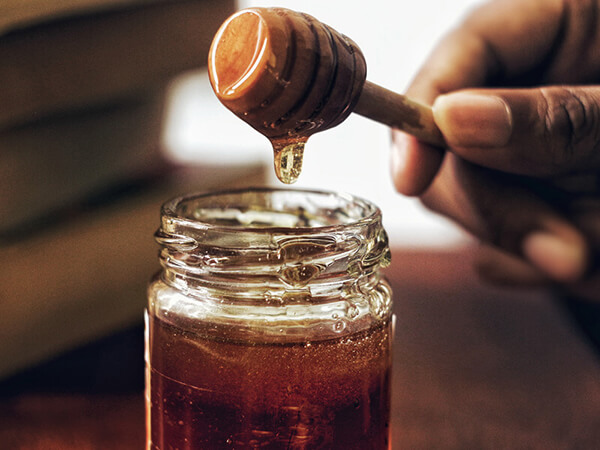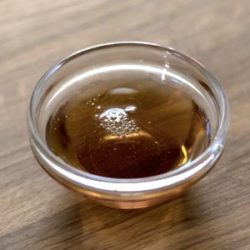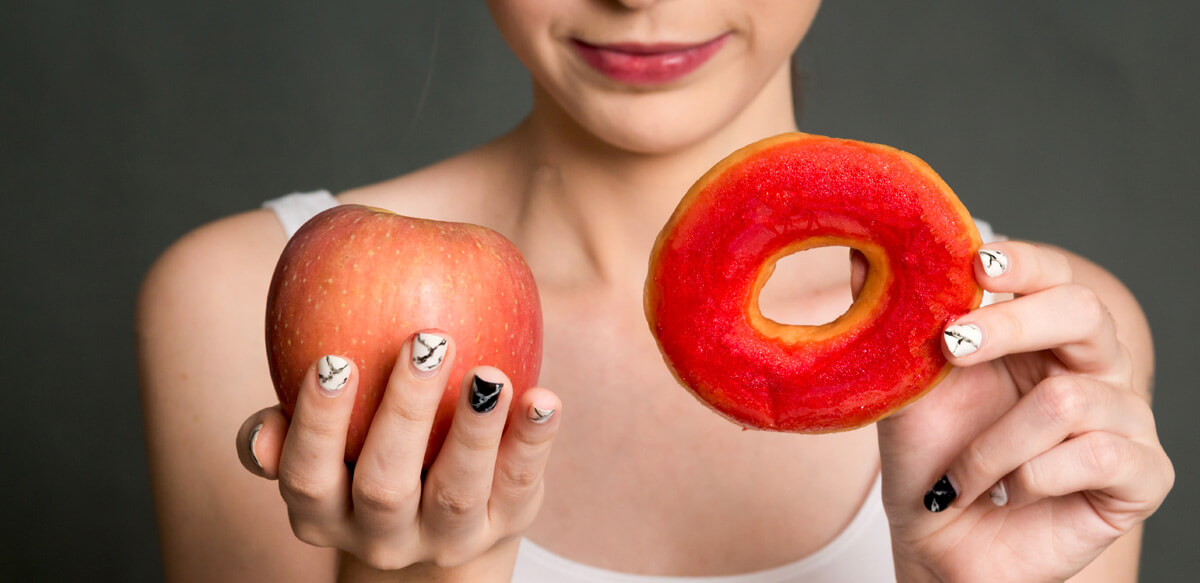Fructose 101
It is common knowledge among most savvy shoppers these days that anything that ends in “-ose” is a sugar, but while we are familiar with the more common glucose, sucrose and lactose, fructose can sometimes be left out of the sugar conversation. So, what is it, and do you need to treat it just like any other sugar? Are there health problems associated with fructose? What are the alternatives to fructose?
What is Fructose?
While free (isolated) fructose was virtually absent in our diet a few hundred years ago, it has become a major component of our modern diet. Often called fruit sugar, fructose (fructus is Latin for “fruit”) is a simple sugar or monosaccharide that is naturally found in fruits, vegetables, and honey.
You can find fructose in fruits of all kinds, such as apples, pears, and melons, as well as vegetables such as corn, artichokes, cauliflower, onions, beets, and sweet potatoes. Additional dietary sources of fructose include beet sugar, cane sugar, or high fructose corn syrup. While fructose may have the same chemical formula as glucose, it is metabolized differently by the body. Glucose is metabolized in every cell in the body, but all fructose must be metabolized by the liver.
Pure fructose contains no enzymes, vitamins, or minerals and can actually rob the body of micronutrients in order to be used. Naturally occurring fructose found in fruits and vegetables is bound to other sugars, while high fructose corn syrup contains free or unbound fructose. This free fructose interferes with the body’s ability to use key minerals such as magnesium, copper, and chromium.
High fructose corn syrup (HFCS) has been used more recently as a replacement for other caloric sweeteners in not only sports drinks and soda, but also as a replacement for sugar in thousands of other processed and packaged foods. Sauces, salad dressing, fruit juices, syrups, sweeteners, and most processed cereals and energy bars are the top offenders for hidden fructose sources.
While fructose and glucose are the same in caloric number, HFCS is not only sweeter, but also less expensive than other added sweeteners, allowing food and beverage manufacturers to increase the sweetness of their products for a fraction of the cost. You can find HFCS lurking in everything from canned foods, cereals, baked goods, and desserts, to sweetened and flavored dairy products like yogurt, condiments, and jellies. It is also found in most fast food items.
And, there can be health problems associated with fructose.
Chains of fructose molecules, also referred to as fructo-oligosaccharides or fructans, can be found in high concentrations in some vegetables and fruits, which can lead to symptoms in people who have fructose intolerance.
It is important to note that fructose is better tolerated in the presence of glucose. This means foods containing at least as much glucose as fructose is often well tolerated.
Fructose intolerance can be more common and problematic in those who have IBS and other GI disorders, as foods that contain higher levels of fructose may cause gas, bloating, abdominal cramping, and diarrhea.
6 Health Problems Associated with Fructose
While fructose was initially thought to be healthy due to its low glycemic index, newer research has linked many health problems associated with fructose. Chronically high consumption of fructose can lead to insulin resistance, obesity, diabetes, and cardiovascular issues, to name a few.
1. Insulin Resistance
Due to structural differences, the metabolism of glucose and fructose is quite different. Fructose is metabolized in the liver and does not cause the same hormonal response from the pancreas to release insulin the way that glucose normally would. Unlike glucose, fructose does not stimulate insulin secretion or enhance leptin production.
Fructose also converts to fat more readily than any other sugars. High fructose loads can promote insulin resistance, but also lipogenesis and decreased insulin receptor activation. Fructose consumption can also lead to increased levels of uric acid, which has been linked to insulin resistance and the development of type 2 diabetes.
Fructose consumption can cause stressful conditions for liver cells, resulting in the release of pro-inflammatory messengers involved in insulin resistance development.
2. Hormone Problems
The digestion, absorption, and metabolism of fructose differs from that of glucose. While fructose in combination with fiber, vitamins, and minerals—as found in fruit and veggies—can be a healthier source of energy for the body, isolated fructose can affect appetite regulation.
Regular glucose consumption has been found to suppress the hunger hormone, ghrelin, and stimulates leptin, which suppresses your appetite. Fructose has been found to have no effect on ghrelin and can actually interfere with your brain’s communication with leptin, resulting in overeating. When you compare fructose with glucose, fructose is the one that may provoke more desire for food, while also neglecting to stimulate satiating hormones. While you might have the same amount of calories from fructose, the metabolic effect will be completely different, regardless of the identical calorie consumption.
3. Decreased Cognitive Function
Fructose consumption has been linked to cognitive impairment and can lead to brain insulin resistance, which leads to reduced mental and brain function.
Brain insulin resistance is associated with memory impairment, while additional evidence shows the harmful effects of fructose on cognitive function with reduced factors for encoding neuronal genes.
Apart from fructose negatively affecting learning and memory, it can also affect new brain cell growth in the hippocampus, which is the area of your brain associated with learning and memory.
4. Obesity
Fructose promotes insulin resistance and weight gain. Fructose ingestion produces smaller increases in circulating satiety hormones compared with glucose ingestion, leading to overeating and less feelings of fullness. Fructose also leads to greater hypothalamic activity than glucose, the area of the brain that regulates appetite and reward processing. This often leads people to continue the vicious cycle of reaching for another fructose fix.
Fructose can’t cross the blood brain barrier into the hypothalamus either, which further delays the signal telling your body that you are full. Animal subjects who had access to high fructose corn syrup gained significantly more weight than those with access to table sugar, even when overall caloric intake was equal.
5. Heart Health
Although glucose and fructose are both monosaccharides, fructose is sweeter and metabolized differently. Fructose doesn’t increase circulating levels of leptin, which helps to shuttle glucose into the cells and out of the bloodstream.
Fatty acids that are created during the digestion of fructose accumulate as fat droplets in the liver and skeletal muscle, causing insulin resistance, which can later progress to metabolic syndrome. Excessive fructose consumption can also lead to oxidative stress and increased triglyceride synthesis and fat storage in the liver, leading to elevated cardiovascular risk.
6. Gout
When the body is breaking down fructose, chemicals called purines are released into the bloodstream. The breakdown of purines produces uric acid, which is what goes on to form urate crystals in the joints that can lead to gout.
Uric acid is the product of fructose metabolism. When you increase your consumption of fruit juices, sugary drinks, and high-fructose corn syrup, you can also increase your risk of developing gout. Having excessive circulating concentrations of urate is a major risk factor for developing gout. Individuals who suffer from gout experience acute and recurring attacks of arthritis which can affect several joints and be painful. Gout can also be a potential risk factor for cardiovascular disease.
Alternatives to Fructose
If you are looking to reduce your intake of fructose, and eliminate any possible health problems associated with fructose, try these three sweet swaps!
Stevia
 Native to South America, this herb has been shown to support healthy blood sugar levels, support healthy weight management, and kill bacteria in the mouth. Stevia is a small perennial shrub that has been used for centuries as a bio-sweetener and for other medicinal uses such as lowering blood sugar. This natural herbal sweetener contains no calories and is over 100-300 times sweeter than table sugar. You can find stevia in liquid dropper form, packets, or dissolvable tablets, making it the perfect substitute for your sweet tooth fix!
Native to South America, this herb has been shown to support healthy blood sugar levels, support healthy weight management, and kill bacteria in the mouth. Stevia is a small perennial shrub that has been used for centuries as a bio-sweetener and for other medicinal uses such as lowering blood sugar. This natural herbal sweetener contains no calories and is over 100-300 times sweeter than table sugar. You can find stevia in liquid dropper form, packets, or dissolvable tablets, making it the perfect substitute for your sweet tooth fix!
Coconut
 This naturally sweet tropical fat is great not only for your heart health, but also your sweet cravings, baking, and cooking needs! The saturated fats found in coconuts are medium chain fatty acids (MCFAs), whose metabolism is different than other fatty acids. MCFAs do not require bile to be broken down and assimilated and are directly used in the body to produce energy.
This naturally sweet tropical fat is great not only for your heart health, but also your sweet cravings, baking, and cooking needs! The saturated fats found in coconuts are medium chain fatty acids (MCFAs), whose metabolism is different than other fatty acids. MCFAs do not require bile to be broken down and assimilated and are directly used in the body to produce energy.
Raw coconut nectar (or coconut palm nectar) comes from the sap of the coconut blossom, which is further evaporated at low temperatures. This produces a low-glycemic syrup. The sap can be further fermented to make coconut aminos and coconut vinegar, as well as coconut sugar, which is the dehydrated and crystallized version of coconut nectar. The taste is similar to brown sugar and is great for cooking and baking because of its low melting temperature and high burning temperature. You can use coconut sugar as you would regular sugar because it provides the same amount of calories and carbohydrates per serving, (about 15 calories and 4 grams of carbohydrates per teaspoon).
Raw Honey
 While honey technically still contains fructose, raw honey also provides valuable nutrients, vitamins, minerals, and enzymes, making it a great sweet swap! The process of heating honey destroys many of the valuable nutrients. To be considered “raw” honey, it should not be heated above 95ºF, which is the temperature that one would normally find in the hive.
While honey technically still contains fructose, raw honey also provides valuable nutrients, vitamins, minerals, and enzymes, making it a great sweet swap! The process of heating honey destroys many of the valuable nutrients. To be considered “raw” honey, it should not be heated above 95ºF, which is the temperature that one would normally find in the hive.
Raw honey possesses many antimicrobial and antibacterial properties, as well as 22 essential amino acids, 27 minerals, 5,000 enzymes, B vitamins, polyphenols, flavonoids, and antioxidants. A potent enzyme in raw honey, pinocembrin, has been found to induce apoptosis (programmed cell death) of many types of cancer.
Raw honey can be used as a great pre- or post-workout natural energizer, as the carbohydrates and B vitamins can help give you that extra boost to get through those last few reps. In fact, honey was used by runners in the Olympic Games in ancient Greece as an energy source. One tablespoon of raw honey contains roughly 64 calories, with a glycemic load of around 10.
How We Keep Things Sweet and Healthy at MariGold…
Our bars have just a small touch of all natural sweeteners that have been in use for 1000’s of years. We keep things real instead of relying on sugar alcohols such as erythritol (from GMO crops) and Sucralose as some other bars do.
Each MariGold bar has from 1 to 4 grams of total sugar, and 20+ grams of protein which makes them perfect for anyone desiring to keep their blood sugar and insulin in check!
This tiny bit of natural sweetener helps keep our bars fresh longer without the use of any kind of preservatives. And, they are all types of sweeteners that our bodies were designed to handle.

Chicory Root Fiber
Chicory root fiber is an excellent source of fiber.

Maple Sugar
Maple syrup is also known to contain minerals and antioxidants!

Coconut Nectar
This nectar is certified to have a glycemic index of 31

Stevia
Our stevia adds a sweet taste, with none of the bitter taste often found in other stevia products.

Author: Brianna Diorio
FDN-P, Holistic Lifestyle Coach, NASM – CPT
Brianna Diorio is a clinical nutritionist and holistic lifestyle coach, as well as one of our MariGold Ambassadors.
“These bars are truly delicious and nutritious, my favorite combination!”
References:
https://www.ncbi.nlm.nih.gov/pubmed/20086073
https://www.ncbi.nlm.nih.gov/pmc/articles/PMC4078442/
https://jamanetwork.com/journals/jama/fullarticle/1555133
https://www.ncbi.nlm.nih.gov/pmc/articles/PMC4429636/
https://www.princeton.edu/news/2010/03/22/sweet-problem-princeton-researchers-find-high-fructose-corn-syrup-prompts
https://jamanetwork.com/journals/jama/fullarticle/1555133





